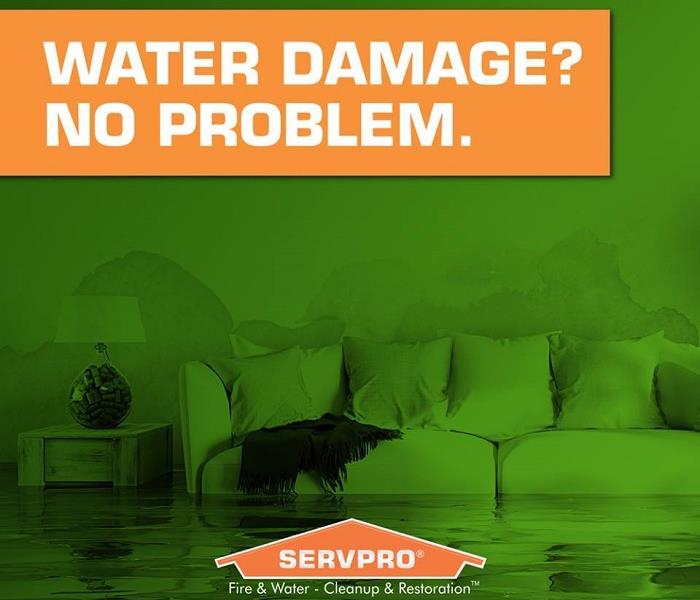What to do after Water Damage Effects Your Business
2/10/2022 (Permalink)
What to do after you discover water in your commercial facility?
- Safety First
The first step is to make sure the building is safe. Safety hazards from falling ceilings to electrical hazards may be present. If it looks like a ceiling or wall might fall do not enter the room. Place a warning sign and lock the door if possible. Be careful of water that has come through electrical panels or outlets. Old or damaged breakers may not trip, and the area may have live electricity running through it. If necessary and safe to do so, it may be best to shut the electricity off. If in doubt stay away from the area until a professional can inspect the damages.
- Stop the Source of Water
If you know where the water is coming from and can turn it off at its source, do it. Larger commercial buildings should have separate valves for each area. This way you are not shutting down the entire building. If you do not know these locations, contact the building engineer or facility manager. If the roof has failed find a company to tarp or construct a temporary roof. Most commercial restoration companies should have a solution for you if needed.
- Documentation
It may be a day or even a few weeks before the adjuster arrives. Pictures of standing water will help your adjuster justify the claim. If demolition is necessary, then those pictures may be the only proof that the facility was wet. Videos are even better and can cover more area in a short period of time.
- Get the Water Out
It is easiest to remove water in its liquid form. Using mops, squeegees, wet vacs, or even towels will help start the process. A restoration company or even a carpet cleaning company will have powerful extraction tools to remove standing water fast. As the water begins to saturate building materials it will have to be removed through evaporation and dehumidification, which will take more time and energy.
- Start Dehumidification Before Evaporation
Removing moisture from the air is a key component of drying a commercial facility. While many people’s first instinct is to put fans on wet areas, this may cause more harm than good. Too much evaporation may lead to the dew point, or 100% relative humidity. Cranking the HVAC down to fast may also lead to the same situation. As condensation begins, building material will begin to sweat. Unaffected areas begin to absorb moisture and secondary damages occur. If the condition persists, mold growth may begin to form. Before forcing evaporation, it is important to know the temperature, humidity, and dew point.
- Damage Inspection
The damage inspection should include an initial moisture map. Specialized tools help determine the extent of and severity of the water damage. Thermo-hygrometers will show things such as dewpoint and humidity. Thermal cameras will show temperature differentials and can help pinpoint hidden moisture. As a word of caution, be wary of those who rely on thermal cameras alone. The camera will only show temperature differentials, not actual moisture content. Moisture meters verify what is wet and give quantitative readings.
- Set a Structural Drying Strategy and Mitigation Plan
After the inspection, there should be enough information to create a plan or strategy. The plan should include at least the following:
- Quantity of air movers or fans
- Amount and type of dehumidification
- What areas or building materials are wet, and the current % of moisture in those materials
- The drying goal, or point at which those materials are dry
- What materials will need demolition and when they will be removed
- The estimated time frame of the project
- The estimated cost of the project or at least the initial phases of the project
Several other items such as chain of communication and billing are important, but it is paramount that the customer understands and agrees with the mitigation plan. There should be consensus before signing a contract. This will help keep the project on track and avoid future discrepancies.
CALL SERVPRO of Santa Rosa County 850-939-4700 FOR ALL YOUR CLEANING AND RESTORATION NEEDS

 24/7 Emergency Service
24/7 Emergency Service
